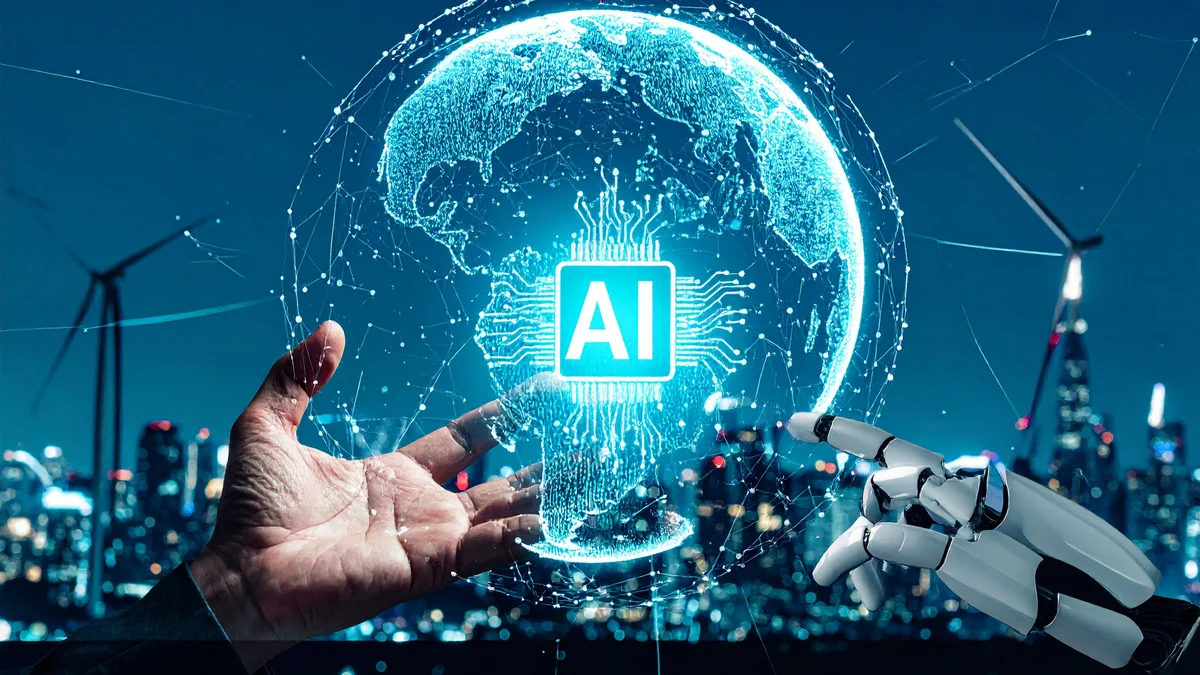Introduction: Why This Blog?
Artificial Intelligence (AI) is no longer a sci-fi fantasy—it’s here, shaping how we work, create, and live. But with its rise come questions: Will AI take my job? Can it make my life easier? How do I even start using it? My blog is here to answer these questions and show you how AI can be your ally. Whether you’re curious about planning a vacation with AI, boosting productivity, or exploring its creative potential, I’ll guide you through practical applications, benefits, and ethical considerations. My mission is to make AI approachable, inspiring, and useful for everyone. Want to know more about me? Check out my introduction in Meet Vijay.
What Is AI?
At its core, AI is like a super-smart helper built into computers and devices. It learns from examples, makes decisions, and solves problems—often faster and at a larger scale than humans. Think of AI as the brain behind your Netflix recommendations, Siri’s voice responses, or even apps that help doctors detect diseases early. For this blog, I define AI as:
Artificial Intelligence (AI) is technology that mimics human thinking to make life easier, smarter, and more connected. From suggesting your next favorite song to automating tedious tasks, AI works behind the scenes to help you achieve your goals.
This definition keeps it simple and relatable, focusing on AI’s practical impact for curious, non-technical readers. I crafted this with help from Grok, an AI tool by xAI, to ensure it resonates with you. Below, I’ve outlined the main types of AI to give you a clearer picture.
Types of AI
AI comes in different flavors, each with unique capabilities:
- Narrow AI (Weak AI): Designed for specific tasks, like virtual assistants (Siri, Alexa), recommendation systems (Spotify, YouTube), or self-driving car features (Tesla Autopilot). This is the AI we use every day.
- General AI (Strong AI): A theoretical AI that can handle any task a human can, like reasoning across diverse fields. It doesn’t exist yet but is a goal for future research.
- Superintelligent AI: An even more advanced concept where AI surpasses human intelligence in every way. It’s still speculative and raises ethical questions.
For now, Narrow AI is what impacts your life most, and it’s what I’ll focus on in this blog—practical tools you can use today.
Why AI Matters: The Fifth Industrial Revolution
AI is often called the backbone of the Fifth Industrial Revolution (5IR), a new era where technology enhances human creativity and decision-making. Just as steam engines (1st), electricity (2nd), computers (3rd), and the internet (4th) transformed society, AI is reshaping how we live. It’s powering smarter businesses, personalized education, and even hobbies like photography or cooking. In future posts, I’ll dive deeper into how the 5IR is unfolding and what it means for you.
Applications of AI in Everyday Life
AI is already part of your day, often in ways you might not notice. Here are a few examples:
- Productivity: Tools like Grammarly use AI to polish your writing, while apps like Notion AI organize tasks and generate ideas.
- Hobbies: AI can enhance experiences like my Tasting Intelligence app, which analyzes tasting notes to recommend wine or coffee pairings.
- Travel: AI-powered platforms like Google Maps or Kayak suggest optimal routes or vacation deals.
- Creativity: Tools like Adobe Firefly create stunning visuals from text prompts, making art accessible to everyone—as shown in the header image I created using Firefly.
These examples show how AI can save time, spark creativity, and simplify tasks. In my posts, I’ll share hands-on experiments with these tools and tips to try them yourself.
Benefits and Challenges of AI
AI offers incredible benefits but also comes with challenges. Here’s a quick look:
Benefits:
- Efficiency: AI automates repetitive tasks, like data entry or calculations, freeing you to focus on what matters.
- Personalization: From tailored playlists to customized learning plans, AI makes experiences unique.
- Accessibility: AI tools democratize skills, like creating art or analyzing data, for non-experts.
Challenges:
- Job Displacement: AI may automate some roles, raising concerns about employment.
- Ethics: Bias in AI systems, like facial recognition, can lead to unfair outcomes.
- Overreliance: Depending too much on AI risks losing human judgment.
My philosophy is AI-assisted, but human-verified. I’ll explore these benefits and challenges in my posts, always grounding insights in real-world tests and ethical considerations.
How I Use AI in This Blog
To make my writing clear and engaging, I use AI tools like spellcheckers, text improvers (e.g., Grammarly), and generative AI for inspiration. For example, I used Grok to craft the AI definition above. Here’s the prompt I used:
 Grok
Grok
I have a blog about bringing AI closer to non-technical readers. Define AI in a simple, relatable way for curious beginners, emphasizing practical benefits.
Artificial Intelligence (AI) is like a super-smart helper built into computers and devices. It allows them to learn from examples, make decisions, and solve problems, much like a human would—but faster and at a massive scale. From suggesting your next favorite song to helping doctors spot diseases, AI is technology that works behind the scenes to make life easier, smarter, and more connected for everyone.
For transparency, I’ll share key prompts and results in my posts, often simplified for readability. This “prompt engineering” shows you how to interact with AI effectively, and I’ll highlight it visually to keep things clear.
What to Expect
This blog is your guide to making AI your ally. Expect posts on:
- Practical AI tools for work, hobbies, and daily life.
- Experiments with apps like Tasting Intelligence or AI photo editors.
- Insights on AI ethics and how to use it responsibly.
- Tips to boost productivity and creativity with AI.
Join me as we explore AI’s potential, one practical step at a time. Happy reading!
Posted on June 30, 2025
Last updated on June 30, 2025
